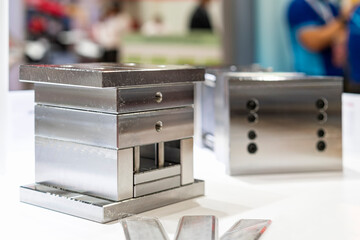
MOULDING
Moulding is the most common modern method of manufacturing plastic parts; it is ideal for producing high volumes of the same object. Moulding is the process of melting plastic pellets (thermosetting/ thermoplastic polymers) that once malleable enough, are injected at pressure into a mould cavity, which fills and solidifies to produce the final product. The moulding industry has evolved over the years from producing combs and buttons to producing a vast array of products for many industries including automotive, medical, aerospace, consumer products, toys, plumbing, packaging, and construction.
Injection mould Considerations while manufacturing.
There are a number of considerations to bear in mind before undertaking moulding:
- Financial considerations
The initial cost of the machines is high inclusive of the mould cost which also have a initial cost.
- Quantity of the required part
Quantity plays an important major role while selecting the moulding process, it should be made sure that the given process is the cost effective method for the process.
- Factor related in designing
Designing is the first step towards the production, factors consideration is must while selecting the features that are cost effective. Designing factors with less features and shapes that can be easily machined with given tools
- Final article production
With less cycle time the production rate can be boosted and can be more effective with usage of the hot runner and good tooling plans. Such simple changes would bring a lot more effective ways to increase production rates. Cost savings from minimising assembly requirements, especially if there are multiple parts to be produced about millions in number.
The Basics considerations of Injection Moulding
- Polymers Best Suited for Injection Moulding
- Injection Moulding Equipment
- Injection Moulding Process
- Injection Moulding Cycle
- Different Types of Injection Moulding Processes
- Stress
- Gates
- Common Gates
- Gate Location
- Wall Thickness
- Sink Marks
- Textures
- Parting Lines
- Common moulding Defects
Main components of moulding machine
Injection unit
Consists of three main components:
- Screw motor drive
- Reciprocating screw and barrel
- Heaters, Thermocouple, Ring plunger
Clamping unit
Consists of three main components:
- Mould
- Clamping motor drive
- Tie bars, the sender is clamped onto the edge of a workbench
Uses of Moulding
Moulding is the preferred production method for most mass-produced plastic products, due to its high output rate and consistency of quality. These products include but are not limited to:
- Automotive parts - dashboards, bumpers, grilles.
- Electronic components - electrical connectors, enclosures, protective sleeving.
- Medical devices - syringes, valves, dishes.
- Consumer plastics - mobile phone cases, bottle caps, toys.
- Furniture parts - seat cushions, chairs, seat covers.
Advantages of Moulding
- Multiple parts can be produced with multiple colours.
- Can design and manufacture intricate and complex shapes
- Fast in production time, leading to a high output rate and high efficiency.
- Low labour costs due to more automated process and minimum human intervention.
- Repeatable process , able to produce the multiple product exactly same.
- Little wastage of material as scrap plastic is and re-used in the again, and no harm to environment.
- Sometimes final parts needs little post work after moulding for better finishing.
Disadvantage of moulding
- Initial Cost of the Machines is high.
- Cost efficiency is less if less volume are to be produced.
- mould should be designed carefully and properly under skilled and experienced designers.

